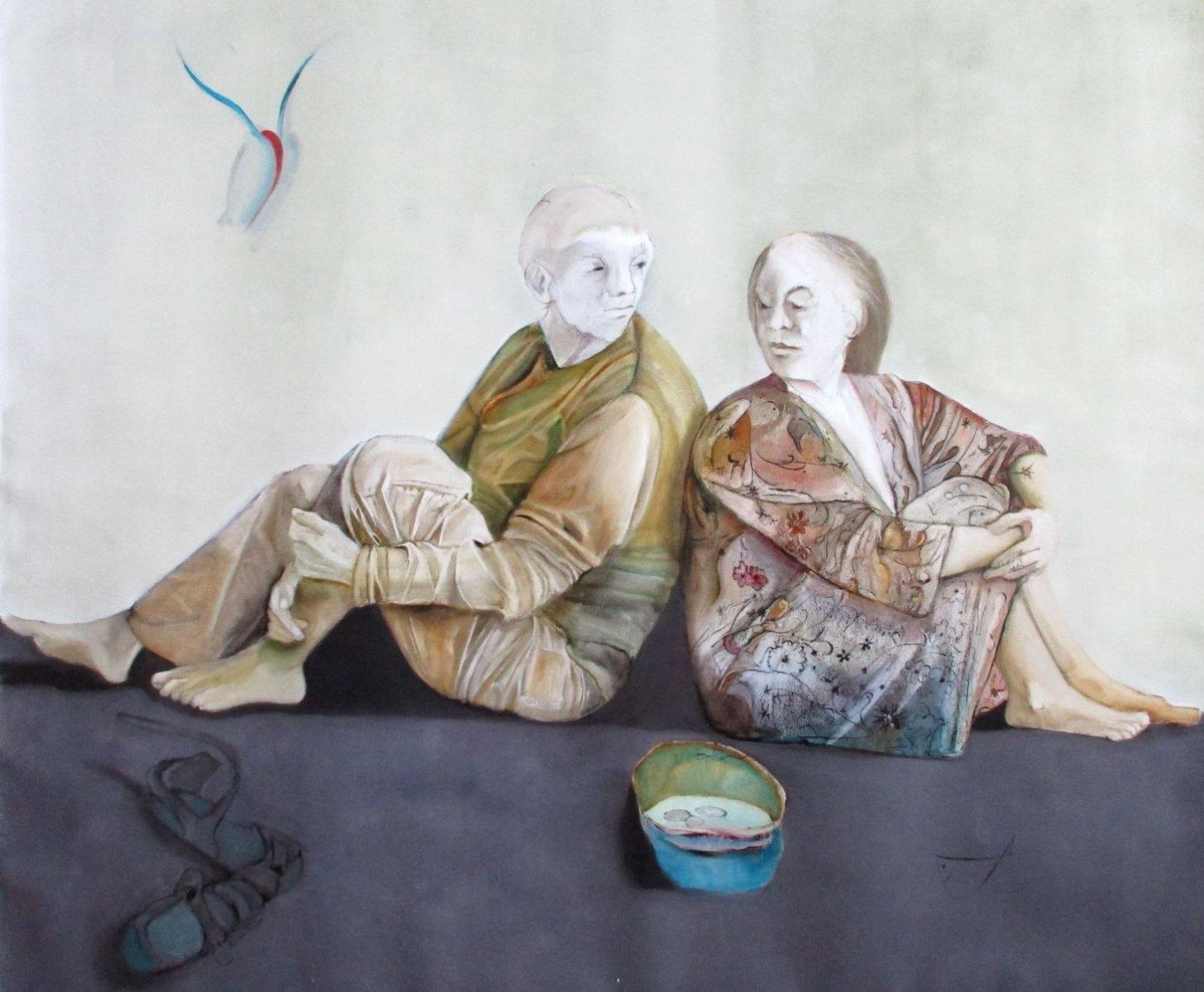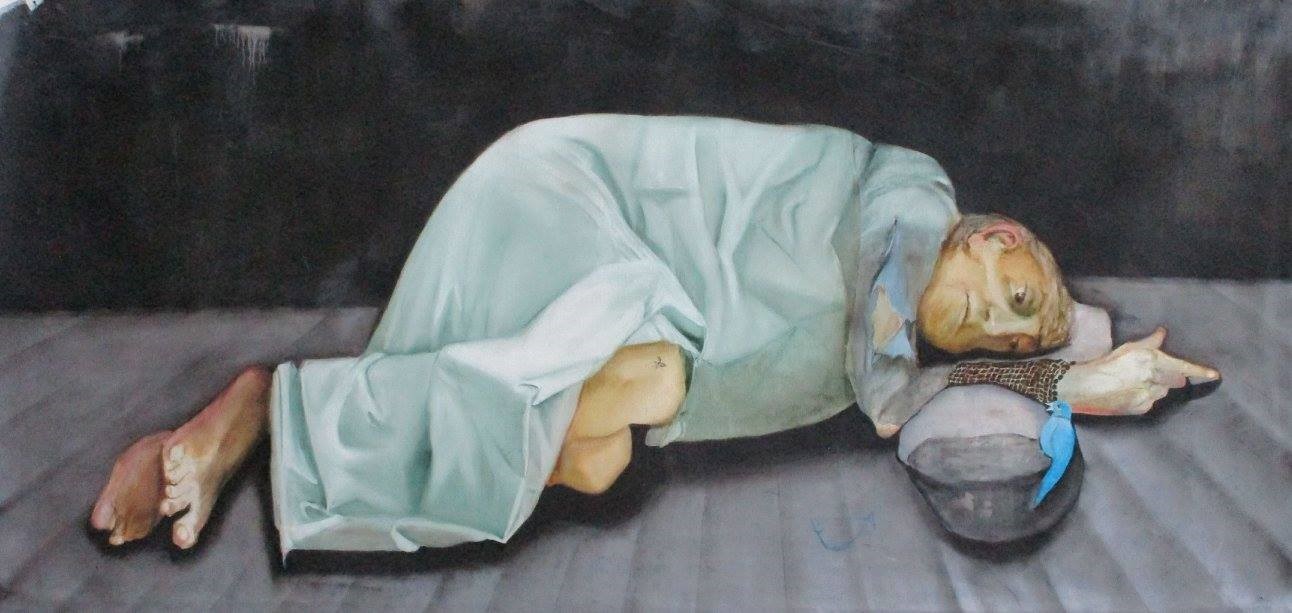Wickert, Johannes - VM - Koenraad De Wolf
Johannes Wickert: Beggars

God Sees, Knows and Loves Beggars
by Koenraad De Wolf
Beggars are visible in most shopping precincts and railway stations. But asking for alms in order to provide for the necessities of life is at odds with our contemporary mentality. Why? In a society driven by egoism and an insatiable craving for material possessions, there is less and less place for ‘that kind of people.’ Beggars are usually undesirable or at most silently tolerated. In Antwerp, Belgium, they are actually banned from shopping areas and touristic attractions. The call to crush that ‘cancer’ continually increases.
Nevertheless the act of begging as well as the ‘virtue’ of giving alms to the poor is deeply rooted in most of the religious and spiritual traditions worldwide. In East Asia Buddhist mendicant monks are widespread. This is also embedded in the fundamentals of Christianity. In one of the oldest books of the Old Testament – the so-called ‘social laws’ in Deuteronomy 15:4 – it is written that ‘there should be no poor among you.’ ‘Believers should be generous,’ Jesus said, because ‘the poor you will always have with you.’
Jesus and his disciples had no possessions. In the beginning of the 13th century St Francis of Assisi deemed it necessary for the world to have beggars. He considered them to be respectable people who are seen, desired and loved by God. In the mendicant orders of the Friars Minor that were established after the death of St. Francis, material possessions were strictly forbidden. Franciscan spirituality is based on the idea that people are only truly free if they have distanced themselves from every material possession.
The beggar is the central theme of a new cycle of paintings by the German artist Johannes Wickert (b. 1954). He is one of the few religiously-inspired artists who expresses a trenchant sense of the developments in our current society and gives form to them in poignant canvases. The immediate cause was his confrontation with widespread begging in the city of Aachen (Aix-la-Chapelle), Germany. Totally at odds with the narrative of economic prosperity, the underclass of society is a growing. Fifteen to twenty percent of the population lives on or just under the poverty line and their number increases year by year. Germany has had a housing shortage for many years. For the average family it is almost impossible to buy a house, let alone that there would be room for the fast-growing legion of homeless people and beggars.

The paintings of Wickert confront us with this tough reality. On the canvas Blue Bird he shows a beggar lying on the ground, dressed in rags. The man does not expect anything anymore from life. His gaze is focused on infinity. He struggles to stretch out his thumb and index finger in an attempt to put out his hand to a passer-by. But does this person see him or want to see him? There are not even a few euro cents in his hat. On the rim of his hat sits a bird. In the middle of this misery the bird symbolizes the dream or the hope of another and better life. It is not a coincidence that the bird is blue. This home-made blue paint can be found in all of Wickert’s works, referring to the supernatural and heavenly. In spite of all negativity, not all is lost for the beggar. The artist also alludes indirectly to the initiatives of Christian communities that are compassionately concerned with the lot of the homeless in Aachen.
Wickert wants to rouse people’s conscience. Yet the crux of the matter is that beggars – as St Francis of Assisi already said more than 800 years ago – are human beings who have a deep longing to be seen, known and loved.
*******
Johannes Wickert: The Couple, oil on canvas, 130 x 150 cm, 2018.
Johannes Wickert: Blue Bird, oil on canvas, 80 x 170 cm, 2018.
Johannes Wickert (b. 1954) is a German artist. He studied physics and psychology, wrote books about Einstein and Newton and is professor at the University of Cologne. In his paintings he identifies himself with people who waste away in our harsh society. Wickert touches the essence of human suffering, traces its boundaries and on the basis of his faith attempts to formulate an answer to the question of its meaning. ‘I cannot imagine a life without any form of religion,’ he says. ‘And yet, faith especially needs images besides theology and the proclamation of the Gospel. Art can give a unique and contemporary face to the texts of the Bible, whereby people can begin to experience Christian doctrine in a new way.’
Koenraad De Wolf (1956) is a Belgian historian and publicist. He published numerous books about contemporary religious art. In 2009 he wrote a monograph about Johannes Wickert. For more information, see www.koenraaddewolf.be.
ArtWay Visual Meditation August 18, 2019


